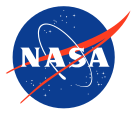The National Aeronautics and Space Administration (NASA, pronounced /ˈnæsə/) is an agency of the United States government, responsible for the nation's public space program. NASA was established by the National Aeronautics and Space Act on July 29, 1958, replacing its predecessor, the National Advisory Committee for Aeronautics (NACA). The agency became operational on October 1, 1958. NASA has led U.S. efforts for space exploration ever since, resulting in the Apollo missions to the Moon, the Skylab space station, and later the Space Shuttle. Currently NASA is supporting the International Space Station and developing new Ares I and V launch vehicles.
read more...
NACA
Main article: National Advisory Committee for Aeronautics
From late 1957 to early 1958, the National Advisory Committee for Aeronautics (NACA) began studying what a new non-military space agency would entail, as well as what its role might be, and assigned several committees to review the concept. On January 12, 1958, NACA organized a "Special Committee on Space Technology", headed by Guyford Stever. Stever's committee included consultation from the ABMA's large booster program, referred to as the "Working Group on Vehicular Program," headed by Wernher von Braun, who became a naturalized citizen of the United States after World War II.Project Mercury
NASA's earliest programs involved research into human spaceflight and were conducted under the pressure of the competition between the U.S. and the Soviet Union that existed during the Cold War. Project Mercury, initiated in 1958, started NASA down the path of human space exploration with missions designed to discover simply if man could survive in space.Project Gemini
After the Mercury project, Project Gemini was launched to conduct experiments and work out issues relating to a moon mission. The first Gemini flight with astronauts on board, Gemini 3, was flown by Gus Grissom and John Young on March 23, 1965.Apollo program
The Apollo program was designed to land humans on the Moon and to bring them safely back to Earth. Apollo 1 ended tragically when all the astronauts inside died due to fire in the command module during an experimental simulation. Because of this incident, there were a few unmanned tests before men boarded the spacecraft. Apollo 8 and Apollo 10 tested various components while orbiting the Moon, and returned photographs. On July 20, 1969, Apollo 11 landed the first men on the moon, Neil Armstrong and Buzz Aldrin. Apollo 13 did not land on the Moon due to a malfunction, but did return photographs.Research centers
- Jet Propulsion Laboratory, California Institute of Technology, Pasadena, California
- Goddard Institute for Space Studies, New York City
- Goddard Space Flight Center, Greenbelt, Maryland
- John H. Glenn Research Center at Lewis Field, Cleveland, Ohio
- Langley Research Center, Hampton, Virginia
Test facilities
- Ames Research Center, Moffett Federal Airfield, Mountain View, California
- Dryden Flight Research Center, Edwards Air Force Base, Los Angeles County, California
- Independent Verification and Validation Facility, Fairmont, West Virginia
- John C. Stennis Space Center, near Bay St. Louis, Mississippi
- Langley Research Center, Hampton, Virginia














